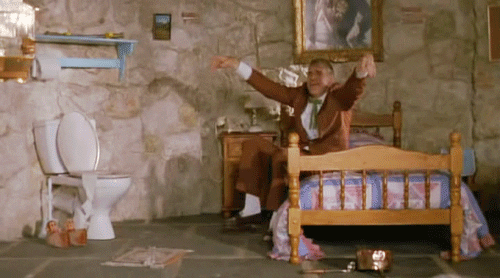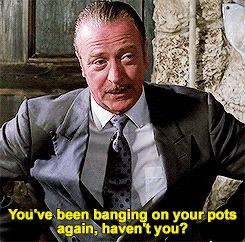Look 104: The Wizard of (Frank) Oz
Fellow angler,
It’s been a busy two weeks. Since last we spoke, I’ve been through Halloween (I did a My-Cousin-Vinny-themed couples costume), Día de Muertos (I ate way too much pan de muerto), daylight savings time (I now wake at dawn and walk 1-2 hours in the morning), my three-year wedding anniversary (yay!), and an election (boo!).
I’ll probably share more about those next week in my (paid) behind-the-scenes post but today I want to share some tidbits from a talk I attended with other (much more accomplished) writers.
Background
The Museum of the Moving Image (great museum — highly recommend if you’re in NYC) is holding a two-month retrospective on the career of Frank Oz.
I know and love Frank because he’s the first puppeteer Jim Henson hired to the Muppets in 1963. Oz was a Muppet mainstay until 2001 and voiced some of the most well-known characters: Cookie Monster, Bert, and Grover from Sesame Street; Miss Piggy, Fozzie Bear, Animal, and Sam the Eagle1 from The Muppet Show; and Yoda from Star Wars (who’s not technically a Muppet).
Oz also had a successful career as a writer and director (I’m tired of listing things so here are his film credits) and the museum has been screening his movies with him in attendance to discuss them.
I bought tickets to a screening of Dirty Rotten Scoundrels (one of my favorite movies) with Frank Oz and Steve Martin talking in person after the movie.
Yes, I was excited. I skipped a housewarming, a birthday party, and a Diwali party so I could attend this event.

4 useful takeaways
Below are some useful insights from Frank and Steve (yes, we’re besties and on a first-name basis).
1. Frank talked about how directing for him isn’t about getting actors to do what he wants them to do for a given scene. His goal is to get people to act in a way that’s authentic for the world their character inhabits. From there, his goal is to let the actors do their job for as long as needed until they find “what makes the scene bubble.”
2. They talked a lot about having the freedom to improv on set and creating a sense of play. Everyone said the movie was very fun to shoot. Some of the on-set fun led to ideas that made it into the movie.
But for Frank, you can only have that sort of useful play if you first do the work to set up an environment that has clear parameters or bounds. From there, any resulting improv or silliness allows you to move toward finding the essence of the scene. Frank credited Jim Henson for teaching him this.
3. Steve said that when he writes — whether it’s scripts or essays for The New Yorker — he likes to know the ending first. By knowing where he’s going with the story, he has something to work toward. Without that destination, he’s just floating.
4. Relatedly, it was nice to hear Frank and Steve both say how much they appreciate writers. Every script changes during filming, with directors, producers, and actors all making tweaks and rewrites of varying sizes. But as Frank said, you can only come up with those edits and new ideas because the writer has done the hard work of creating a world for you to work in. Frank said that a writer’s job is the hardest because they have to start a whole project from a blank page. (Who am I to disagree?)

4 dirty rotten facts
Dirty Rotten Scoundrels was a remake of Bedtime Story, a 1964 movie that starred David Niven and Marlon Brando but apparently wasn’t very good.
Since the movie follows two con men, studio execs felt the title needed to be something that made the characters sound likeable. Otherwise audiences wouldn’t pay just to see bad people. Steve and Frank thought that was stupid and decided to go in the complete opposite direction. The title was Steve’s idea and he shared it with Frank by calling his house late one night.
The ending wasn’t in the script and was made up while filming. The key element was based on characters that Glenne Headly would make up during dinner chats.
When Frank pitched the idea to Michael Caine, he said that the actor would get a villa in the south of France while shooting. Caine asked the address of the villa and since it was right between the villas of two of his friends, he figured it would (at the very least) be a fun way to spend the summer.

4 non rotten facts
Steve Martin said he’d been kicking around the idea for Only Murders in the Building for like 10 years. The same is true with Bowfinger (1999), a movie he wrote and starred in, while Frank Oz directed it.
Steve named the movie Bowfinger because he wanted to call it Hollywood Party and felt that name made much more sense with the film, but there was an old movie named Hollywood Party and he didn’t realize you could just reuse names like that.
Perhaps to no one’s surprise, Miss Piggy gets around. Specifically, she went through multiple voices and personalities before she coupled up with Frank Oz. For the curious, this video has her (thankfully) rejected voice attempts.
Oz adjacent: As a child, one of my favorite toys was a Farmer Ernie.

Until next time,
Happy fishing!
It appears Disney is trying to rebrand Sam the Eagle as Sam Eagle. Terrible. ↩
Add a comment: